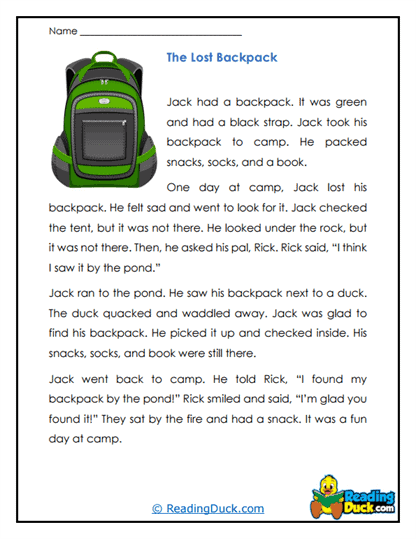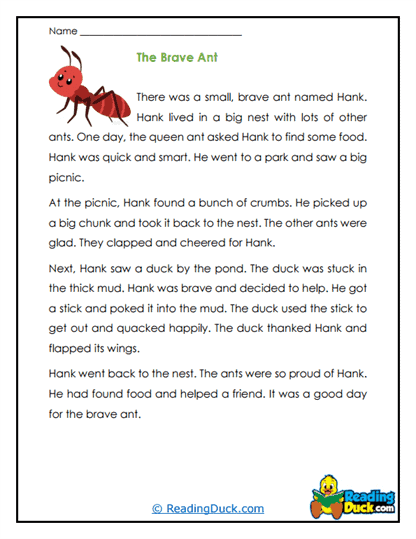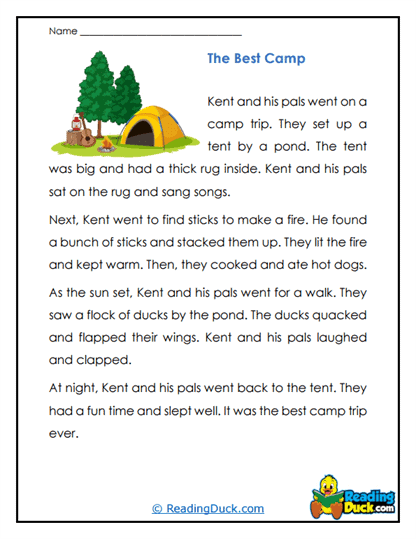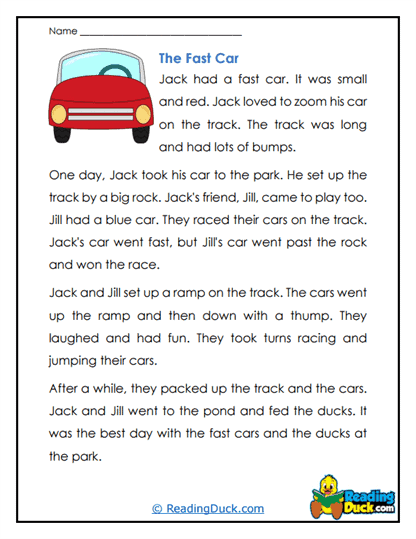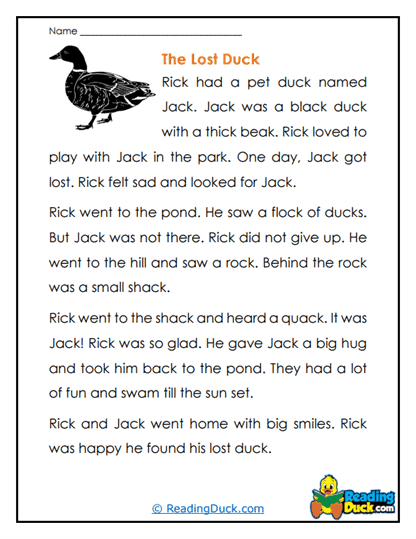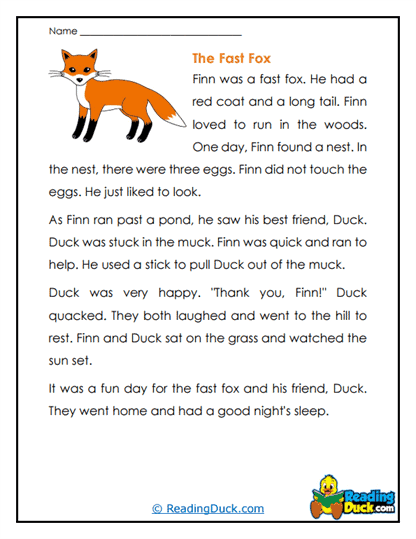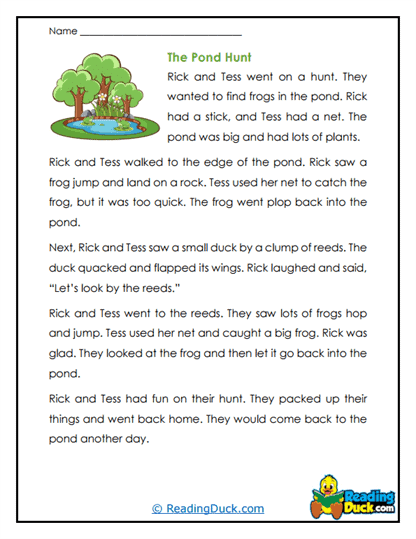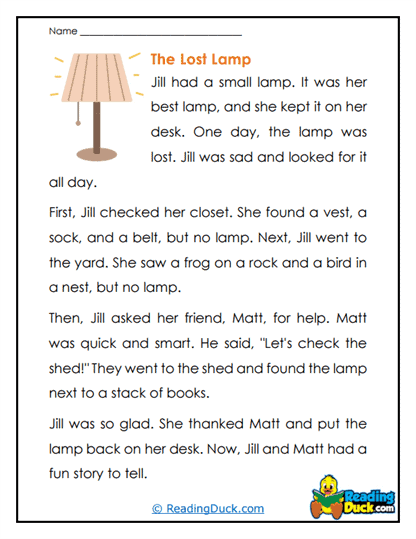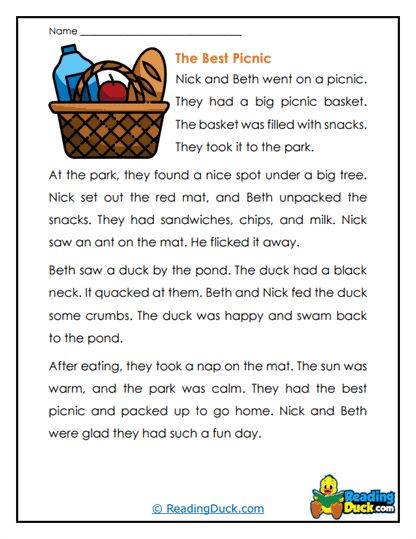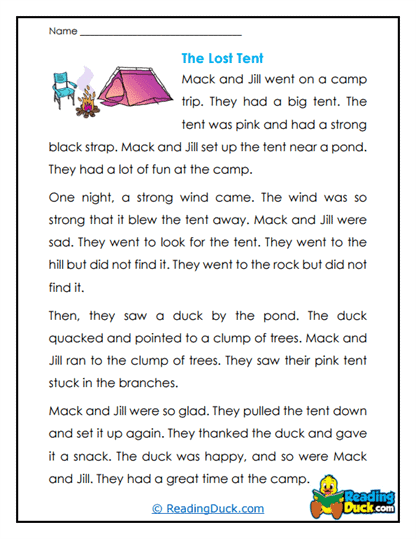CVCC Reading Passages Worksheets
About Our CVCC Reading Passage Worksheets
Our CVCC (Consonant-Vowel-Consonant-Consonant) Reading Passages Worksheets are carefully designed to support the development of key phonics and reading skills. These worksheets focus on the CVCC word pattern, where a consonant is followed by a vowel and then two consonants, such as in words like “sand,” “milk,” and “lamp.” The targeted reading passages provide students with consistent practice decoding and recognizing these essential word structures, helping them build a strong foundation for more advanced reading.
Each worksheet in this collection is presented in a PDF format, making it easy to download, print, and integrate into your lesson plans or home reading practice. Additionally, each worksheet includes a downloadable answer key, allowing educators and parents to easily assess student progress and provide immediate feedback. The worksheets are a flexible resource, designed to support both classroom learning and independent practice at home.
Key Features of the CVCC Reading Passages Worksheets
The CVCC Reading Passages Worksheets provide structured phonics practice that helps students master CVCC word patterns, contributing to overall literacy development. The following are the key features of the collection:
- Targeted Phonics Focus: These worksheets emphasize CVCC word structures, such as “best,” “fast,” and “sink,” helping students improve their ability to recognize and decode these patterns.
- Improved Word Recognition: Regular exposure to CVCC words enhances students' ability to recognize and read these words fluently, contributing to better reading comprehension.
- Strengthened Decoding Skills: The passages provide opportunities for students to practice breaking down and sounding out words with the CVCC pattern, which is crucial for early readers.
- Contextual Practice: Instead of isolated word drills, the worksheets integrate CVCC words into meaningful reading passages, allowing students to apply their phonics knowledge in context.
- Fluency Building: By practicing CVCC words within connected text, students develop fluency by improving both speed and accuracy in reading.
These features make the worksheets an ideal resource for helping students develop the foundational reading skills they need to advance to more complex word patterns.
Integrating the Worksheets Into Classroom Lessons
Teachers can make effective use of the CVCC Reading Passages Worksheets by integrating them into their daily phonics and reading instruction. The flexibility of the worksheets allows educators to use them in a variety of teaching settings and formats. Here are some strategies for using the worksheets in the classroom:
- Phonics Warm-Up: Begin a phonics lesson with a short reading passage from the worksheets to reinforce the CVCC word pattern of the day. This warm-up activity helps students focus on the phonics skills being taught.
- Small Group Practice: Use the worksheets in small group settings, where teachers can provide more focused instruction to students who need additional support with decoding CVCC words.
- Whole-Class Reading: Have students take turns reading passages aloud during whole-class instruction. This promotes collaborative learning and helps students improve their fluency while practicing CVCC patterns.
- Independent Work: Assign the worksheets during independent reading time, giving students the opportunity to practice at their own pace while reinforcing their phonics knowledge.
- Assessing Progress: Use the included answer keys to assess student understanding and track improvements in decoding, word recognition, and reading fluency.
By integrating these worksheets into daily lessons, educators can provide consistent practice that strengthens students' phonics skills and boosts their overall reading abilities.
Using CVCC Worksheets at Home
Parents and caregivers can also use the CVCC Reading Passages Worksheets to support their child’s literacy development outside of the classroom. These worksheets are easy to incorporate into daily reading routines and provide essential practice with phonics skills that complement school-based learning. Here are several ways parents can use the worksheets effectively at home:
- Daily Reading Practice: Assign a reading passage each day as part of your child’s nightly reading routine. Encourage them to read the passage aloud, focusing on the correct pronunciation of CVCC words to reinforce phonics patterns.
- Shared Reading Time: Take turns reading passages aloud with your child. This shared activity allows your child to hear the correct pronunciation of words while building their confidence in reading CVCC patterns.
- Supplement Homework: Use the worksheets to supplement your child’s phonics homework. After completing a passage, review it together using the answer key to provide immediate feedback and reinforce learning.
- Fluency Building Through Repetition: Encourage your child to read the same passage multiple times. Repeated reading is a proven technique for improving reading speed and accuracy.
- Tracking Progress: Keep track of your child’s progress as they work through the worksheets. Celebrate improvements in their reading fluency and word recognition to keep them motivated and engaged.
By incorporating these worksheets into regular home reading practice, parents can help their children build the necessary skills to become confident and fluent readers.
Understanding the Importance of CVCC Word Patterns
CVCC word patterns play a critical role in early phonics instruction. These patterns, where a vowel is followed by two consonants, introduce students to more complex word structures that they will encounter frequently as they progress in reading. Here’s why mastering CVCC word patterns is important for young readers:
- Building Decoding Skills: CVCC words like “hand,” “milk,” and “jump” require students to decode a wider variety of consonant combinations, helping them expand their decoding abilities beyond simpler CVC (Consonant-Vowel-Consonant) words.
- Improving Sound Blending: CVCC words help students practice blending sounds smoothly, especially when consonant clusters appear at the end of a word (e.g., “bend,” “sand”).
- Preparing for Multisyllabic Words: Once students master CVCC patterns, they can apply this knowledge to read longer, multisyllabic words with similar sound structures, giving them the tools to tackle more complex texts.
- Increasing Vocabulary: Learning CVCC words expands students' vocabulary by exposing them to a broader range of words that they will frequently encounter in reading.
The CVCC Reading Passages Worksheets provide valuable practice with these word patterns, helping students gain the skills they need to progress as readers.
Promoting Reading Fluency Through CVCC Practice
Reading fluency is a key component of literacy development. Fluent readers can read smoothly, quickly, and with accurate comprehension, allowing them to focus more on the meaning of the text rather than getting stuck on individual words. The CVCC Reading Passages Worksheets help students develop fluency by providing consistent practice with decoding CVCC words in connected text. Here’s how regular use of these worksheets supports fluency development:
- Improving Accuracy: The more students practice reading passages with CVCC words, the more accurate they become at decoding these word patterns.
- Increasing Reading Speed: Fluency involves reading with speed and smoothness. By practicing CVCC word patterns in meaningful passages, students gradually increase their reading speed.
- Strengthening Comprehension: As students become more fluent readers, they can focus less on decoding and more on understanding the meaning of the text. Practicing CVCC words in context helps students improve both fluency and comprehension.
Regular practice with these worksheets will help students make steady progress in reading fluency, leading to greater confidence and success as independent readers.
Tips for Maximizing the Use of CVCC Reading Passages Worksheets
To help students get the most out of the CVCC Reading Passages Worksheets, educators and parents can follow these practical tips:
- Set Clear Learning Objectives: Before using the worksheets, define a clear goal, such as improving decoding skills with specific CVCC word patterns or building fluency.
- Repetition for Fluency: Encourage students to read the passages multiple times to reinforce their understanding of CVCC word patterns and improve reading speed.
- Integrate into Homework Assignments: Assign the worksheets as part of a weekly homework routine to ensure students get consistent practice outside of school.
- Track Student Progress: Use the answer keys to monitor student progress and celebrate improvements in decoding accuracy and fluency.
- Incorporate into Literacy Centers: Set up literacy centers in the classroom where students can work independently or in small groups to practice reading CVCC passages.
By following these tips, educators and parents can maximize the effectiveness of the worksheets, ensuring that students receive consistent and focused practice with CVCC word patterns.
Conclusion
The CVCC Reading Passages Worksheets provide an invaluable resource for building foundational phonics skills in early readers. Focusing on CVCC word patterns, these worksheets offer targeted practice that helps students improve decoding, word recognition, and reading fluency. Available in PDF format with easy-to-use answer keys, the worksheets are perfect for both classroom instruction and home practice.
With consistent use, students will gain confidence in their ability to read CVCC words, setting the stage for greater reading success and comprehension as they move on to more complex texts. These worksheets are a key tool for developing strong, independent readers.
